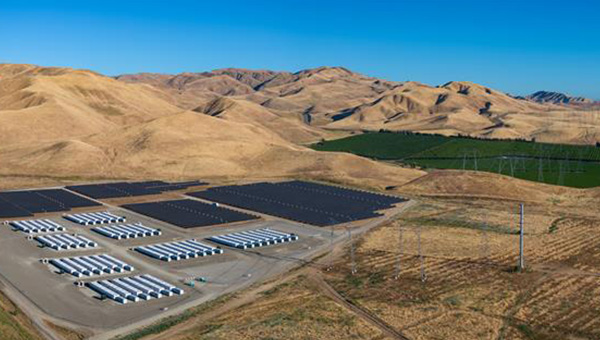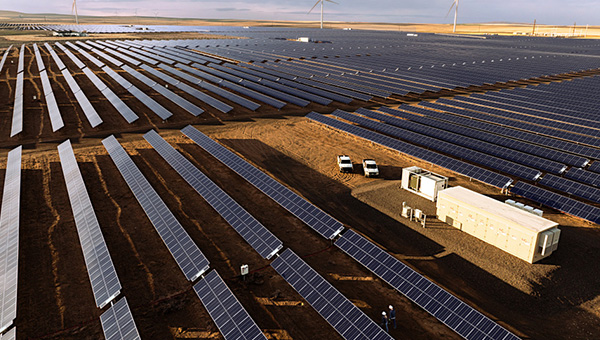Deploying Renewables: A Near-Term Strategy for Power Utilities
As energy demand increases across regions and sectors throughout the United States, utility and co-operative leaders like you are facing a pivotal moment. Keeping pace with rising load and capacity requirements while maintaining reliability and affordability isn’t just an energy challenge; it’s a strategic imperative.
Increasingly, balancing power demand with the challenge of delivering reliable, cost-effective energy will require new levels of efficiency, leaving you reevaluating your generation mix with a clear focus. For many utilities, the answer lies in an “all-of-the-above” energy strategy that combines renewables, storage, natural gas, and nuclear. But not all options are equal when it comes to speed-to-market.
The Benefits of Renewables in an “All of the Above” Energy Strategy
As you consider how to expand your generation mix, it’s important to remember the critical differences in how soon various solutions can be brought to market. In the near-term, renewables provide unmatched advantages that can help your company meet its load and capacity requirements as quickly and affordably as possible.
1. Meeting Demand And Expanding Capacity For Utilities Now
Renewables and battery energy storage are ready now to address demand, meet capacity requirements and help lower power prices. While other forms of generation will be necessary for supporting projected future demand, renewables are the fastest form of new generation to deploy today, making them an essential option for any utility with urgent generation needs.
By the next decade and beyond, renewables and battery energy storage can be supplemented by natural gas-fired generation and, to a more limited extent, nuclear, given the time it will take to develop and build. Meeting rising energy demand will require these long-term solutions, which are being incorporated into plans to meet long-term Integrated Resource Plan (IRP) goals; however, it's important to note that these resources are not projected to be scalable until 2030. For utilities with urgent load and capacity needs, fast-to-deploy renewables are the most effective way to bridge the gap, ensuring your customers receive reliable power at the right price, starting today.
2. Lowering Generating Costs and Unlocking Savings with Renewables
Every investment you make today will shape your system costs for decades. Renewables can provide the generation needed to meet demand at the lowest cost possible now, making them an essential solution for keeping bills low.
In fact, adding renewables and battery energy storage to your existing generation mix can help serve increases in your load while significantly improving the economics of your generating system. Using your existing asset base (along with renewables) both to serve the new load and charge your battery energy storage system during non-peak times can help increase its load factor and reduce your levelized cost of energy. By unlocking efficiency and savings, renewables and battery energy storage can help integrate new loads while protecting general rates from the costs of systemic growth.
3. Enhancing Grid Resilience and Energy Security
The integration of renewables into your energy mix doesn’t just offer cost savings—it can also enhance grid resilience and security. While events like severe storms, heatwaves and other extreme weather can disrupt energy grids that are reliant on centralized, non-renewable sources, distributed renewable generation, backed by battery storage, can add critical resilience to your grid. Distributed renewables also allow for greater energy security by decentralizing production and reducing the reliance on vulnerable supply chains.
Additionally, integrating renewables can effectively manage the impacts of potential disturbances or outages, ensuring a consistent and reliable energy supply. This strategic diversification can play a vital role in reinforcing public trust and regulatory confidence that utilities can meet heightened demand without compromising continuity or safety.
4. Building Long Term Energy Strategies for Reliable, Low-Cost Power
As you develop your Integrated Resource Plan (IRP) or long-range strategy, fast-acting renewables give you capacity relief, while creating a launchpad for a more diversified generation future. Creating an effective systems-based solution for more generation and capacity will require strategic investment in a variety of technologies, including renewables, battery energy storage systems, natural gas-powered generation and nuclear energy. By prioritizing fast-to-deploy renewables, you can address your immediate energy needs while paving the way for effective long-term strategies. Embracing this comprehensive approach not only meets heightened energy demands but can also position your power utility as a forward-thinking leader committed to reliability, affordability and resilience in the face of evolving power supply challenges.

Work With The Leader In Energy Infrastructure Development
At NextEra Energy Resources, we understand what’s at stake, and how quickly you need to move. We are the world’s largest energy infrastructure developer in North America, with a global leadership position in battery storage. NextEra Energy Resources offers the speed-to-market capabilities necessary to meet urgent needs. Our scale, experience, and technology uniquely position us to deliver custom solutions tailored to the specific requirements of power utilities.
Tags: Renewables | Renewable Energy | Power Demand | Utilities

